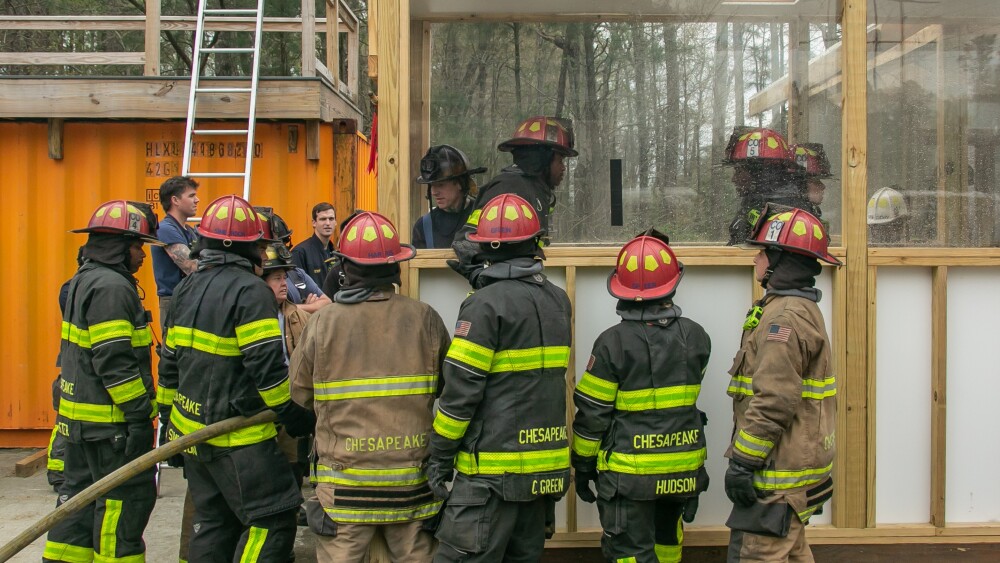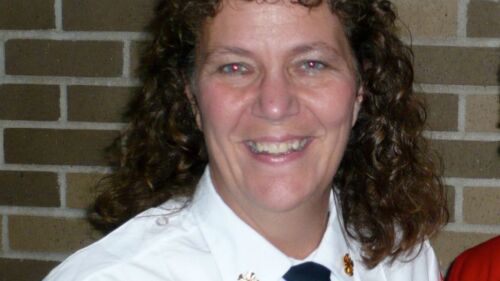By Chief Judy Thill
As most in the fire service know, cancer, cardiac issues and suicide are leading causes of illnesses and deaths among firefighters. Many fire departments have been concentrating their training efforts in these areas, which is great. However, we also can’t forget all of the other incidents that take the lives of firefighters or cause them injury. What did we all learn when we first began our fire service journey? The basics!
To get us back to that point and make sure that departments are building their training programs with an emphasis on the fundamentals, the theme of this year’s Safety Stand Down is “Fire Training: Back to Basics.” Departments are encouraged to suspend non-emergency activities for the week of June 16-22 to focus their training and education on this important topic.
While a department’s safety and health culture starts with leadership, the training provided to firefighters acts as a solid foundation to not only start them off in the right direction but also keep them safe and healthy throughout their fire service careers. Safety Stand Down week breaks this into five daily topics that culminate in the 12 Foundations of Fire Department Training.
Too often, training focuses on the latest and greatest subjects or techniques that were recently learned from a conference, magazine article, school, etc. Those can often be beneficial; however, while the training itself can act as the foundation for firefighters’ safety and health, regular training in the basics acts as additional support to that foundation.
Critical questions
As you think about your department training, ask yourself if you can you answer “yes” to all of these questions:
1. Have you surveyed your coverage area so you are aware of all the risks and types of emergencies that your firefighters may face?
2. Do you create an annual training plan that includes those risks to ensure firefighters are learning the basic skills they actually need for your specific community and not some cool new skill that you will never use?
3. When you on-board new personnel, do you assign mentors so that your recruits have someone specific they can feel comfortable going to with any questions?
4. As part of your annual plan, do you have a list of your subjects determined for upcoming training?
5. Are your instructors prepared to cover the subject, including researching the topic and setting up all the equipment?
6. Is that training documented, and do you take feedback and record those comments so that the next time you train on that subject, appropriate changes can be made?
7. Do you train like you operate on the fireground? Too often, the instructor will let the firefighters take shortcuts at training. This not only poses a training ground hazard to the firefighters, it also means they don’t get the needed repetitions to create muscle memory on how to safely do those skills on scene.
The safety AND health of firefighters needs to be the top priority for training. That means not just concentrating on proper PPE during training but on many other areas as well:
8. Are you sure, before each training, that all your firefighters are physically and mentally healthy enough to do that training? Tools, equipment, apparatus, and any props all have to be inspected and in good working order before using them during training.
9. While leadership is always accountable for everyone’s safety, when it comes to training, do your firefighters know it is also their responsibility to help keep each other safe on the training ground? They should be taught to maintain situational awareness, and if they see something unsafe, it is OK for them to say “STOP!”
10. Do your firefighters decon after specific drills? Having a good decon procedure after both calls and training will not just reduce the chances of cancer, but also cardiac issues from those same chemicals.
11. Do you set up and allow rehab as part of your training protocol?
12. Are you setting up training so your personnel understand how firefighting can affect their mental health, affect their families, and impact quality of life? It’s important that they know where they can turn if they do have issues.
If you can’t answer a solid “yes” to each of these questions, then it’s time to level up your training, and the Safety Stand Down website has many resources to help.
Build your foundation
Training is the foundation of all we do in the fire service and the basics serve as the main supports for that foundation. Take time to visit the Safety Stand Down website to find planning tools for your department’s event, review the 12 Foundations of Fire Department Training, take the Safety Stand Down sweepstakes quiz, and check out all of the resources on how to keep your firefighters safe and healthy.
About the author
Judy Thill is the chief of the Inver Grove Heights (Minnesota) Fire Department and a Minnesota director for the National Volunteer Fire Council. Learn more about Chief Thill:



